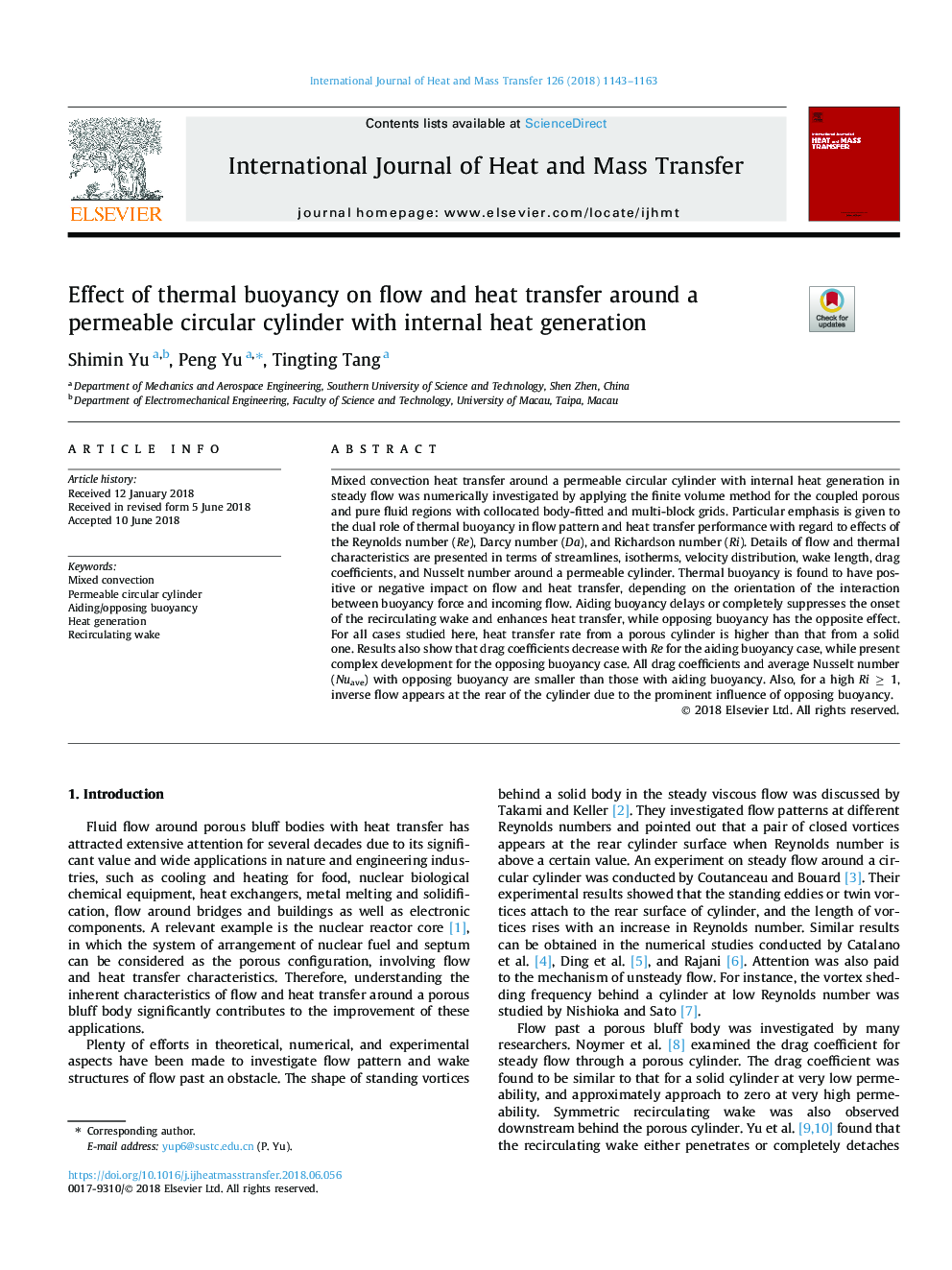| Article ID | Journal | Published Year | Pages | File Type |
|---|---|---|---|---|
| 7053940 | International Journal of Heat and Mass Transfer | 2018 | 21 Pages |
Abstract
Mixed convection heat transfer around a permeable circular cylinder with internal heat generation in steady flow was numerically investigated by applying the finite volume method for the coupled porous and pure fluid regions with collocated body-fitted and multi-block grids. Particular emphasis is given to the dual role of thermal buoyancy in flow pattern and heat transfer performance with regard to effects of the Reynolds number (Re), Darcy number (Da), and Richardson number (Ri). Details of flow and thermal characteristics are presented in terms of streamlines, isotherms, velocity distribution, wake length, drag coefficients, and Nusselt number around a permeable cylinder. Thermal buoyancy is found to have positive or negative impact on flow and heat transfer, depending on the orientation of the interaction between buoyancy force and incoming flow. Aiding buoyancy delays or completely suppresses the onset of the recirculating wake and enhances heat transfer, while opposing buoyancy has the opposite effect. For all cases studied here, heat transfer rate from a porous cylinder is higher than that from a solid one. Results also show that drag coefficients decrease with Re for the aiding buoyancy case, while present complex development for the opposing buoyancy case. All drag coefficients and average Nusselt number (Nuave) with opposing buoyancy are smaller than those with aiding buoyancy. Also, for a high Riâ¯â¯â¥â¯â¯1, inverse flow appears at the rear of the cylinder due to the prominent influence of opposing buoyancy.
Keywords
Related Topics
Physical Sciences and Engineering
Chemical Engineering
Fluid Flow and Transfer Processes
Authors
Shimin Yu, Peng Yu, Tingting Tang,
